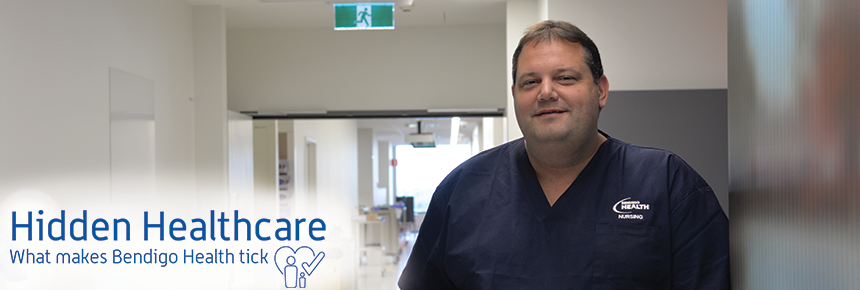 Dan Sheard was tasked with converting his surgical ward into a respiratory ward to treat an expected surge of Coronavirus patients.
Dan Sheard was tasked with converting his surgical ward into a respiratory ward to treat an expected surge of Coronavirus patients.
When Dan Sheard was hurriedly called into a meeting on a Saturday morning last month, he knew change was afoot.
The short-stay surgical unit nurse manager was tasked with repurposing his unit into a respiratory ward to cater for a predicted surge in Coronavirus patients at Bendigo Health.
Three hours after the meeting, Bendigo Health’s new respiratory ward was operational.
But as Dan explains, the physical changes to the ward were the easy part.
“We converted the double rooms to singles as we didn’t know if patients had COVID so they had to be separated but the way we cared for patients changed very rapidly,” he said.
Senior surgical nurses had to adapt, reskill and become medical nurses.
“With surgical nursing there’s a set pathway of care while medical nursing is the complete opposite. Patients are so diverse, conditions are so bizarre and so many systems of body affected,” he said.
“It’s a massive deviation from what they signed up for but they seem to take each challenge they’re given and work through it.
“We’re known as the ‘can do’ ward and have a strong team culture which helps.”
The change in skillset and extra PPE requirements combined with the deadly nature of the virus was a difficult proposition for staff, Dan said.
“When everything is up in the air trying to keep people calm is difficult. It’s my role to be reassuring, provide the most accurate information and make sure we’re doing the right thing,” he said.
Clinical help is also at hand for nursing staff on the respiratory ward.
A clinical support nurse works full-time on the ward to provide formal education and training throughout the day. The ward is also serviced by a respiratory medical team, known as the ‘medical C team’, which includes a number of experienced respiratory physicians.
The ward has so far treated two confirmed COVID-19 patients, but all inpatients are cared for as though they have the disease.
“I think the recent COVID cases have shown us that we can care for people with this virus and come out of the other side. No one (staff) has got sick and it gives you that confidence going forward,” he said.
Dan, who has an extensive background in emergency nursing across metropolitan and regional hospitals, is acutely aware of the dangers presented by the Coronavirus.
“This is one of the greatest challenges I’ve had because of how fast moving the situation is. We’ve found ways and means to adapt and ensure the staff feel safe. I wouldn’t ask my guys to do anything I wouldn’t do. I want all of these guys to go home to their families and loved ones,” he said.
